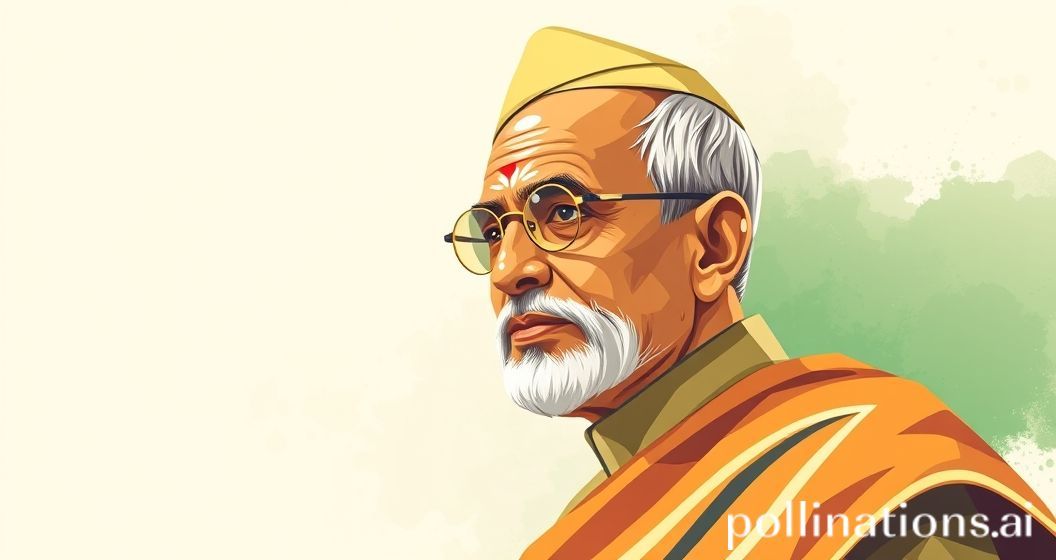Patel Sardar Vallabhbhai – Sardar Vallabhbhai Patel stands foremost among the greatest leaders and builders of modern India. The Iron Man of India was the principal unifier of the country and the chief architect of India’s political integration.
The youth of today need to remember that at the time of Independence in 1947, India consisted of 565 princely states. These states were given the option to join India or Pakistan, or remain independent.
It was through Patel’s extraordinary vision, indomitable courage, fiery nationalism and diplomatic skill that these diverse states were united under our national flag. Patel’s life and work remain a guiding light for modern India. We as a nation owe a deep collective debt of gratitude to his vision, courage, and statesmanship.
Advertisement Among the princely states that had not joined the Indian Union at the time of Independence in 1947 was the erstwhile Hyderabad State, ruled by the Nizam. It posed one of the most serious challenges to India’s unity. The Nizam, striking an intransigent posture, sought either complete independence or accession to Pakistan.
However, Patel’s firm resolve and timely action in the form of Operation Polo in 1948 liberated Hyderabad and ensured its integration. Describing Patel as the “first and foremost architect of Indian unity,” Jawaharlal Nehru observed that “Sardar hammered out a nation with iron and foil. History will record it in many pages and call him the builder and consolidator of the new India….
” Patel’s unwavering sense of duty and his pragmatic approach made him one of the most effective leaders of his time. Through his leadership, discipline, and vision, Sardar Patel not only unified India politically but also strengthened its moral and national foundations.
Much has been said and written about Patel’s multifaceted personality. At the age of 36, he enrolled at the Middle Temple in London and topped his class, becoming a successful barrister. In 1909, his wife Jhaverba was hospitalised in Bombay (present-day Mumbai).
Her health took a sudden turn for the worse, and she died in hospital. Patel was given a note informing him of his wife’s death as he was cross-examining a witness in court.
Such was his commitment to the legal profession that, according to witnesses, a stoic Patel read the note, pocketed it, continued his cross-examination and won the case. Advertisement Patel was a trusted follower of Mahatma Gandhi and was among those leaders who remained steadfast in their loyalty to him throughout their lives.
Deeply inspired by Gandhi’s ideals, he gave up his European attire and embraced the simple lifestyle of a true nationalist. Patel plunged into the thick of India’s freedom struggle, organising peasants and farmers against oppressive British policies during the Kheda Satyagraha.
Later, during the historic Bardoli Satyagraha, Patel proved his organisational and leadership skills by galvanising the peasants and farmers against the British, which earned him the affectionate title of “Sardar”. Fiercely independent in his approach and thinking, Patel occasionally differed with Gandhi on political and administrative matters. He also had strong disagreements with Nehru on several crucial issues, including the handling of Jammu and Kashmir and aspects of foreign policy.
However, the large-hearted and generous visionary never allowed these differences to cloud his perception or interfere with the larger interests of the nation. In his actions, he was always guided by an unflinching commitment to the nation and placed the unity and stability of India above personal opinions or ambitions. Perhaps the greatest example of Patel’s selflessness and magnanimity can be seen in his decision to withdraw his candidacy for the post of Congress president in 1946 in favour of Nehru, following Gandhi’s advice.
The youth of today need to know that a majority of the State Congress Committees had supported Patel’s candidature, and it was evident at the time that the Congress president would eventually become the first Prime Minister of independent India. What course history would have taken if Patel had not shown such exceptional humility and discipline remains a matter of conjecture. His act, however, remains a shining example of selfless statesmanship.
Patel strove tirelessly to lay the foundations of a modern, democratic India. Regrettably, for many years, Patel did not always receive the recognition he deserved.
The 182-metre-tall Statue of Unity near the Narmada Dam in Gujarat today stands as a lasting tribute to his remarkable role in unifying the nation and shaping the destiny of independent India. The statue, whose construction was taken up during Prime Minister Narendra Modi’s tenure as Chief Minister of Gujarat, is on the Narmada River facing the Sardar Sarovar Dam (Patel’s dream of a dam over the Narmada River, shaped into reality), about 100 km from the city of Vadodara.
Let us not forget that the Iron Man of India was also the chief architect of India’s civil services. With characteristic foresight, Patel envisioned an important role for the all-India services, which he described as India’s “steel frame”, in promoting the unity and integrity of the nation.
In his celebrated address to the civil service probationers in 1947, Patel had counselled them to be guided by the spirit of service. As we pay our respectful tributes to this great statesman and iconic son of Ma Bharati on his 150th jayanti on October 31, we should collectively endeavour to emulate his sterling qualities and strive together towards realising his dream of ushering in “suraaj” and in building an inclusive Bharat as we move with an accelerated pace in Amrit Kaal. The writer is former Vice President of India.


